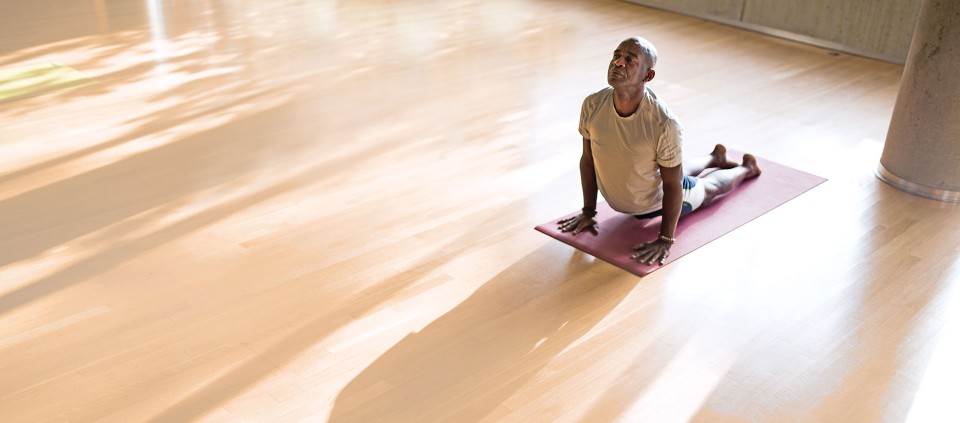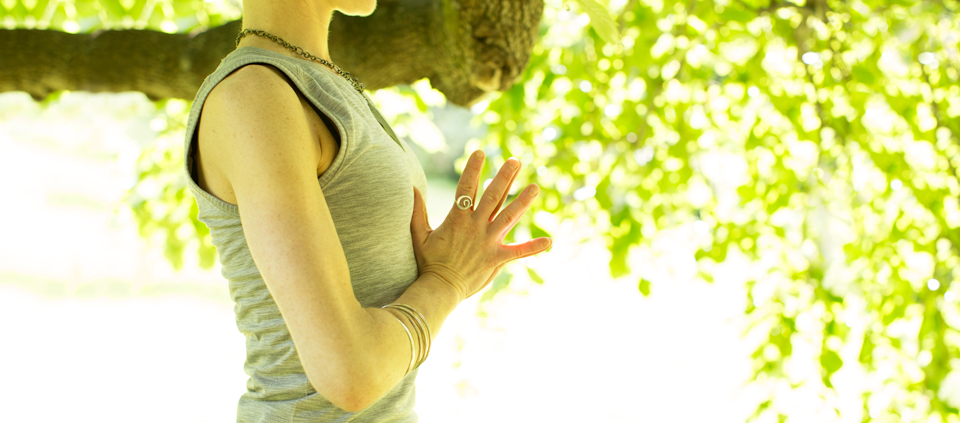How Practice—and Patanjali—Can Help Carry Us Through Uncharted Waters

May 16, 2020
by Janet Arnold-Grych
We are all suffering in different ways as we move through unprecedented, uncharted, and unforeseen waters—and we can feel at the mercy of these waves. The lack of control is emphasized by loss: the loss of familiarity, of morning coffee bar rituals and interactions with neighbors, of structured outlets for our now homebound children. While it feels like waiting is all we can do on this choppy ride, simply trying to be a little kinder—even if that compassion falls short of where we wish it would be—can redirect our focus and offer some steadiness.
Like all of us, I have fears—big ones about economic/communal repercussions, and louder, closer ones about my son’s job in the nonprofit world; about my mother, recently widowed and truly alone; about the health of my family; about my long-term ability to remain content within these walls. Suffering is as old as we are, even if this particular flavor is new. The yogis had great insights on lessening it.
Searching for a lessening of all of this, I found myself rereading the Yoga Sutras of Patanjali and holding on to this thread: “The mind becomes clear and serene when the qualities of the heart are cultivated: friendliness toward the joyful, compassion toward the suffering, happiness toward the pure, and impartiality toward the impure.” (1.33)
Patanjali notes that by focusing on heart-centered kindness, we cut off the energy supply to non-helpful emotions and instead feed a more sattvic, settled, and clear state. In this one-pointed state, we can more readily feel without becoming stuck there.
Leading with the Heart
It’s true that leading with the heart can seem a pretty tough goal when your energy is directed to holding down the lid on your bubbling worries and fears. Yoganand Michael Carroll, senior faculty member for the Kripalu School of Yoga, referenced another key yogic text to explain how to get there. “The Bhagavad Gita tells us that if you are not established in sattva guna, the energy of luminous calm, here’s how to act to move toward it,” says Yoganand. “So, we have as a goal a set of behaviors that come from an advanced state of consciousness. Most of us are not at that stage of consciousness, but if we can act as if we were, we will move towards that high consciousness. We have an instruction to ‘fake it ‘til you make it.’”
Once again, yoga gently reminds us that it’s about intention, not outcome. Pointing to where we want to go—toward more compassion and less frenzy—and taking even the smallest of steps, can bring focus to our mind and pattern to our efforts. Before all of these recent concerns, this is why we stepped in to our practice, however we define it.
We begin in the present with our breath and our awareness. We intentionally direct our gaze and our actions to goodness and good humor, replacing just a bit of the worry with a bit of softness and kindness, toward ourselves and others. Our very real concerns do not vanish, but we remember our greater goal: to cultivate the qualities of the heart and to move with more lightness. What we feed gets stronger.
“By staying present to the difficulties,” says Yoganand, “being with the terrible feelings, and making the best decisions we can even when we don’t have many answers, we are moving towards the enlightened state. I believe the author of the Yoga Sutras is saying to us, ‘Trust yourself and trust your practice.’”
Leaning On Your Practice
There is an old piece of wisdom that says you don’t dig a well when your house is on fire. One meaning I take from that is in the midst of frenzy, hold tight to what you already know to be true. For me, my practice on the mat recenters me to purpose and reminds me that I all I can control are my actions. Pain and suffering are two very different things.
Not long ago, I had an imaging procedure. I am somewhat claustrophobic, so spending 30 minutes in a foot-high MRI or “cave” is at the bottom of my favorites list, right next to “visit a snake farm.” I knew I would feel afraid and so brought with me a set of mala beads. As my tray began to slide into the machine, I focused on what I could control, my breath and my intention, and, holding that first bead with sweaty fingers, began to send good vibes into the universe with a mantra. I continued that japa for the duration of the scan. While I’m not signing up for an MRI anytime soon, meaningfully holding a piece of my practice helped to shelter me from transient fear.
“We have all had experiences in our practice that have increased our faith in life or in practice,” says Yoganand. “Most of us have gone to the mat when we have been hurting physically or emotionally, and the practice has sustained and fed us.”
Now, more than ever, leaning into whatever practice, whatever level is ours, can, like a compass, remind us where true north is. Heart-opening poses like Cobra, Camel, and Bridge can help us choose to lead with my heart rather than my fear. Breathing into that space can bring focus, and faith in the power of grace, tenderheartedness, and commitment. Our meditation practice (even if it’s just five minutes) can allow us to feel more comfortable watching our thoughts float by rather than having an intimate conversation with each of them, particularly the prickly ones. Our reminder to wish for ourselves, and all beings, happiness, health, safety, and well-being can serve as that firmly dug stake that is a beacon to compassion and community.
The Persian poet Hafiz writes, “What we speak becomes the house we live in.” The practices we hold can hold us. “For every experience around you now that is threatening or scary,” says Yoganand, “there is probably a peaceful morning you can remember from the past. For every uncertainty, there was an uncertainty in the past that we survived or perhaps thrived in, through holding on to what we hoped to be true.”
The difficulties of the current situation do not vanish. But our practice can be the staff we lean on to support us over rocky terrain and remind us of our greater journey.
Janet Arnold-Grych is a yoga teacher and writer whose work has been published in Elephant Journal, Huffington Post, Third Coast Digest, and other outlets.
